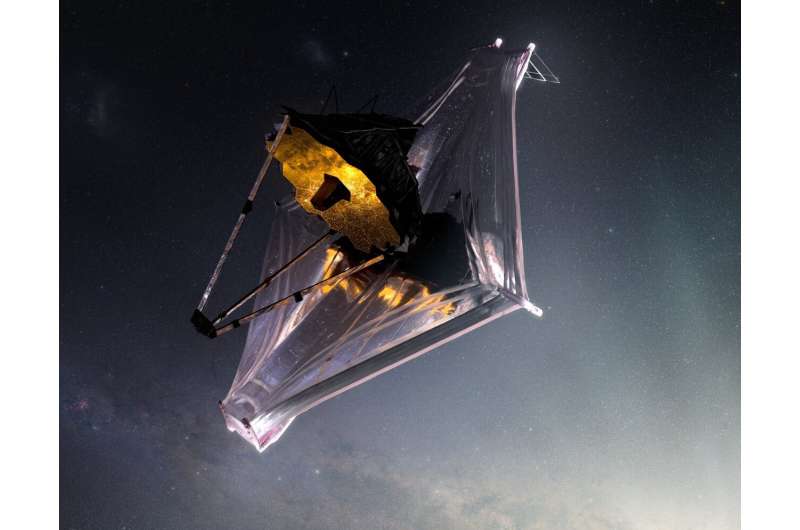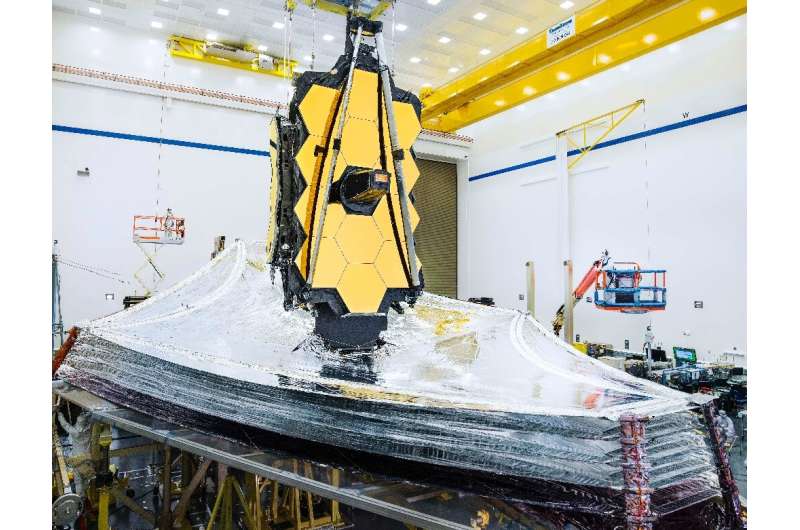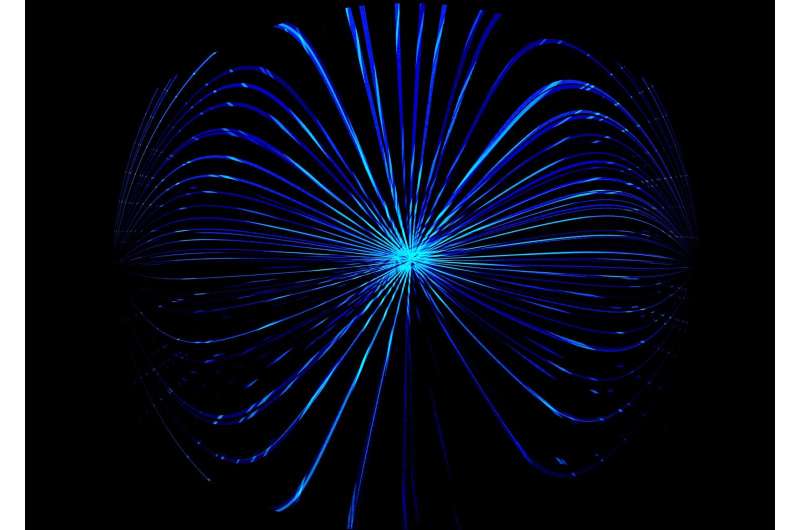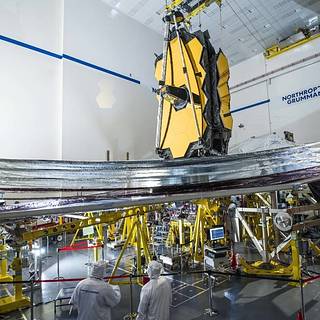
Copernical Team
Flight 19 - New Year, Same Ingenuity
 The next flight on Mars marks the first of 2022 and the nineteenth for NASA's Ingenuity Mars Helicopter. The current mission goal is to reach the Jezero river delta to aid the Perseverance rover in path planning and scientific discovery.
This flight, which will take place no earlier than Friday, Jan. 7, takes the scout vehicle out of the South Seitah basin, across the dividing ridge, and u
The next flight on Mars marks the first of 2022 and the nineteenth for NASA's Ingenuity Mars Helicopter. The current mission goal is to reach the Jezero river delta to aid the Perseverance rover in path planning and scientific discovery.
This flight, which will take place no earlier than Friday, Jan. 7, takes the scout vehicle out of the South Seitah basin, across the dividing ridge, and u China plans missions to moon's south pole
 China has approved the fourth phase of its lunar exploration program, including a basic model of a research station built on the moon over the coming decade, according to the China National Space Administration.
Wu Yanhua, deputy director of the administration, said China would carry out lunar exploration in the future Chang'e-6, Chang'e-7 and Chang'e-8 missions.
As planned, Chang'e-
China has approved the fourth phase of its lunar exploration program, including a basic model of a research station built on the moon over the coming decade, according to the China National Space Administration.
Wu Yanhua, deputy director of the administration, said China would carry out lunar exploration in the future Chang'e-6, Chang'e-7 and Chang'e-8 missions.
As planned, Chang'e- Resolving the black hole 'fuzzball or wormhole' debate
 Black holes really are giant fuzzballs, a new study says. The study attempts to put to rest the debate over Stephen Hawking's famous information paradox, the problem created by Hawking's conclusion that any data that enters a black hole can never leave. This conclusion accorded with the laws of thermodynamics, but opposed the fundamental laws of quantum mechanics.
"What we found from strin
Black holes really are giant fuzzballs, a new study says. The study attempts to put to rest the debate over Stephen Hawking's famous information paradox, the problem created by Hawking's conclusion that any data that enters a black hole can never leave. This conclusion accorded with the laws of thermodynamics, but opposed the fundamental laws of quantum mechanics.
"What we found from strin Sunshield deploys on NASA's Next Flagship Telescope
 The James Webb Space Telescope team has fully deployed the spacecraft's 70-foot sunshield, a key milestone in preparing it for science operations. The sunshield - about the size of a tennis court at full size - was folded to fit inside the payload area of an Arianespace Ariane 5 rocket's nose cone prior to launch. The Webb team began remotely deploying the sunshield Dec. 28, 2021, three days aft
The James Webb Space Telescope team has fully deployed the spacecraft's 70-foot sunshield, a key milestone in preparing it for science operations. The sunshield - about the size of a tennis court at full size - was folded to fit inside the payload area of an Arianespace Ariane 5 rocket's nose cone prior to launch. The Webb team began remotely deploying the sunshield Dec. 28, 2021, three days aft Space business: The final (profitable) frontier
 The snub-nosed craft resembles a shuttle-airplane mashup, and is the latest entrant in a profit-seeking push with staggering potential - and risks - for humans to visit, work or even live in space.
The display of technology like the life-size model "Dream Chaser" ship at the CES tech show in Las Vegas is a sharp signal that the commercial space era is upon us.
Experts see a path for
The snub-nosed craft resembles a shuttle-airplane mashup, and is the latest entrant in a profit-seeking push with staggering potential - and risks - for humans to visit, work or even live in space.
The display of technology like the life-size model "Dream Chaser" ship at the CES tech show in Las Vegas is a sharp signal that the commercial space era is upon us.
Experts see a path for Second and third layers of Webb telescope sunshield fully tightened

The Webb team has completed tensioning for the first three layers of the observatory's kite-shaped sunshield, 47 feet across and 70 feet long.
The first layer—pulled fully taut into its final configuration—was completed mid-afternoon.
The team began the second layer at 4:09 pm EST today, and the process took 74 minutes. The third layer began at 5:48 pm EST, and the process took 71 minutes. In all, the tensioning process from the first steps this morning until the third layer achieved tension took just over five and a half hours.
These three layers are the ones closest to the Sun. Tensioning of the final two layers is planned for tomorrow.
"The membrane tensioning phase of sunshield deployment is especially challenging because there are complex interactions between the structures, the tensioning mechanisms, the cables and the membranes," said James Cooper, NASA's Webb sunshield manager, based at Goddard Space Flight Center.
Webb telescope fully deploys sunshield in mission milestone

The James Webb Space Telescope fully deployed its tennis-court sized sunshield Tuesday, a critical milestone for the success of its mission to study every phase of cosmic history, NASA said.
"All five layers of the sunshield are fully tensioned," said an announcer at the observatory's control center in Baltimore, where team members cheered, a live feed showed.
The 70-foot (21 meter) long, kite-shaped apparatus acts like a parasol, ensuring Webb's instruments are kept in the shade so they can detect faint infrared signals from the far reaches of the Universe.
Real-time alert system heralds new era in fast radio burst research

McGill University scientists have developed a new system for sharing the enormous amount of data being generated by the CHIME radio telescope in its search for fast radio bursts (FRBs), the puzzling extragalactic phenomenon that is one of the hottest topics in modern-day astronomy.
It is not uncommon for the CHIME/FRB project to pinpoint several FRB events in a single day of operation as it sifts through nearly 1 million gigabytes of data gathered by the telescope. With the new data sharing system, which uses Virtual Observatory Event (VOEvent), a standardized language for reporting astronomical events, key details about each FRB that CHIME detects can now be sent in real time to observatories all over the world, allowing them to train their instruments on the source and gather further clues towards unraveling the mystery of FRBs.
"The enormous volume of data that CHIME/FRB generates and the large number of new FRBs that it detects each day is like a gold mine for a community that is eager to point every kind of telescope that exists at the next FRB," says Andrew Zwaniga, lead developer of the CHIME/FRB VOEvent Service and a research assistant in the Department of Physics at McGill.
Sunshield Successfully Deploys on NASA’s Next Flagship Telescope
 The James Webb Space Telescope team has fully deployed the spacecraft’s 70-foot sunshield, a key milestone in preparing it for science operations.
The James Webb Space Telescope team has fully deployed the spacecraft’s 70-foot sunshield, a key milestone in preparing it for science operations. NASA estimates metrics of exploding meteor that shook ground

A meteor that caused an earthshaking boom over suburban Pittsburgh on New Year's Day exploded in the atmosphere with an energy blast equivalent to an estimated 30 tons (27,216 kilograms) of TNT, officials said.
NASA's Meteor Watch social media site said late Sunday a "reasonable assumption" of the speed of the meteor at about 45,000 mph (72,420 kph) would allow a "ballpark" estimate of its size as about a yard in diameter with a mass close to half a ton (454 kilograms).
If not for the cloudy weather, NASA said, it would have been easily visible in the daytime sky—maybe about 100 times the brightness of the full moon.
A nearby infrasound station registered the blast wave from the meteor as it broke apart, enabling the estimates.
National Weather Service meteorologist Shannon Hefferan told the Tribune-Review that satellite data recorded a flash over Washington County shortly before 11:30 a.m. Saturday and officials believed it was due to a meteor "falling through the atmosphere." Hefferan said a similar event occurred Sept. 17 in Hardy County, West Virginia.
Residents in South Hills and other areas reported hearing a loud noise and feeling their homes shaking and rattling.
